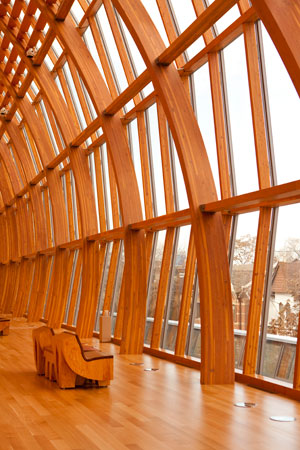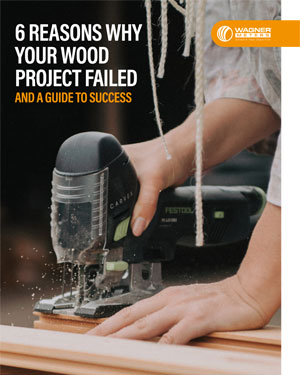The Advantages of Wood as a Building Material
Wood is both a common and a historical choice as a building material. Yet, in the past few decades there has been a move in favor of engineered products or metals like aluminum.
While the desire to not rely on the world’s forests for building demands is well-intentioned, it isn’t as eco-conscious as you might think.

In fact, the advantages of wood as a building material still outweigh other products on the market when looking at environmental impact and performance.
Wood’s Characteristics
Tensile strength
Though wood is a lightweight building material, it outperforms even steel when it comes to breaking length (or self-support length). Simply put, it can support its own weight better, which allows for larger spaces and fewer necessary supports in some building designs.
Electrical and heat resistance
Wood has a natural resistance to electrical conduction when dried to standard moisture content levels, usually between 7%-12% for most wood species. This conductivity is, in fact, the basis for one type of moisture measurement system. Its strength and dimensions are also not significantly affected by heat. This provides stability to the finished building and safety implications for fire situations.
Sound absorption
Wood’s acoustic properties make it ideal for minimizing echo in living or office spaces. Wood absorbs sound, rather than reflecting or amplifying it. This can significantly reduce noise levels for additional comfort.
Beauty
Because there are a wide variety of species available, wood can suit many aesthetics. Different species can also provide varied mechanical, acoustic, and thermal properties.
Wood’s Green Advantage
We live in a time when ecological concerns are high. Because of this, the trend for a time was to move away from wood as a building material to prevent deforestation and manage greenhouse gasses.
But, a closer look at the reasons for this thinking can prove to be slightly off track. Wood has several advantages that help both the builder and the environment.
Wood is Renewable
Unlike concrete or metals, wood is a building material that can be grown and regrown through natural processes such as replanting and forestry management programs. Selective harvesting and other practices allow growth to continue while larger trees are harvested.
While the forests are growing (via solar energy), they are also naturally and efficiently removing carbon dioxide from the environment. It’s a bonus unique to wood.
Wood is Readily Processed for Use
When compared to building materials like steel or concrete, wood has a lower impact on the environment than its counterparts. As a result, it costs less to produce. Water waste and environmental impact is also lower in the wood manufacturing process, particularly when compared to steel.
Many lumber mills use wood byproducts (chips, bark, etc.) as bio-fuel for their facilities. This reduces the fossil fuel burden of the production process. Also, moisture measurement systems like Wagner’s In-Line Moisture Meters allow mills to maximize efficiency and produce less subgrade and waste materials in the drying process.
As forest management and replanting programs continue to grow, these benefits multiply.
Wood Emits Lower Volatile Organic Compounds
As a natural building material, wood emits lower volatile organic compounds (VOCs) and carbon dioxide off-gasses than aluminum, steel, concrete and plastics. But, this is not true of engineered wood products or composite wood products.
Wood’s lower VOC impact is of particular benefit to homes and offices that are occupied on a daily basis. In fact, one of the things wood does give off is a natural organic compound that relaxes people. It’s not just the warmth of wood’s color that creates such an inviting effect.
Wood Enhances Energy Efficiency
Because of its natural cellular structure, wood has a higher insulation rating than both steel and plastic. This means that homes and buildings require less energy to maintain heating and cooling. Plus wood can help regulate humidity levels to a small degree. It has been suggested that a hardwood floor installed over a wood subfloor provides the same insulation value as a 22-inch concrete floor.
Wood is Biodegradable
One of the biggest challenges of many building materials, including concrete, metal, and plastics, is that when they are discarded, they take an impossibly long time to decompose. When exposed to natural climate conditions, wood will break down much more quickly and actually replenish the soil in the process.
On the flip side, understanding the role of moisture and wood rot means that in optimum conditions, the lifespan of a building or floor can easily outlive the lifespan of a tree!

Free Download – 6 Reasons Your Wood Project Failed
Optimizing Wood’s Use with Moisture Content Measurement
One of the most important elements for maximizing wood’s performance over time is having an accurate understanding of wood’s interaction with moisture.
The first step in preventing moisture-related damage in wood floors and other wood-based building materials is bringing each product to the correct moisture content level.
This process begins at the sawmill kilns and carries on through to each finished building application. At each step, it’s necessary for accurate moisture content measurement to determine the wood’s final performance.
Why the focus on moisture content?
Wood is a hygroscopic material. It naturally adjusts to the humidity in the air around it. In other words, it’s always finding a balance between its internal moisture content and the ambient conditions.
On the job site, wood needs to be in balance with its environment, a state referred to as equilibrium moisture content or EMC. If builders or flooring installers begin the project before wood has adjusted to the relative humidity, they run the risk of the wood warping, twisting, splitting, or having significant gaps or buckling.
The right tool for monitoring wood moisture content (MC) is a wood moisture meter.
Pin-style moisture meters work in conjunction with the electrical resistance properties of wood by measuring a precise area between the tips of two metal probes or “pins” inserted into the wood. Pinless moisture meters have the advantage of measuring moisture content along an entire length of board without causing repeated damage to the wood’s surface.
Here at Wagner Meters, our pinless moisture meters are designed with IntelliSense™ Technology. This means MC readings are not as susceptible to surface moisture or temperature, and can “scan” wood for moisture content at a uniform depth without surface damage. The meters provide easy-to-use, accurate moisture content measurement.
Overall, wood has some “built-in” advantages. It has both environmental and aesthetic appeal. With the right application of wood moisture content management, wood can keep those properties for generations.
Larry Loffer is a senior technician at Wagner Meters, where he has over 30 years of experience in wood moisture measurement. With a degree in Computer Systems, Larry is involved in both hardware and software development of wood moisture measurement solutions.
Related Posts via Taxonomies
Last updated on January 13th, 2022




There was great information in this article
Wood is a lightweight building material, it outperforms even steel when it comes to breaking length Simply put, it can support its own weight better, which allows for larger spaces and fewer necessary supports in some building designs.
Thanks for sharing this quality content with us. Really, it is very informative. Great work!
This article is very majestic. Great information provided.
Loved the article and the information provided within! May I use this website as a citation for my assignment? It requires the author and the date published!
Thanks for sharing this information on advantages of wood as a building material, i like this useful informative blog.
I like that you talked about how using wood is great not only to give a fine appearance but because the material is renewable and will not affect the environment. He would really like to get some help from a professional that can get him the right materials to build with. My brother told me that he wants to have a new bridge built on his property and is asking me for advice on what material should he choose.
It’s great that you said wood is an excellent building material because it absorbs sound instead of reflecting or amplifying it. My dad wants to have a barn constructed in his newly-bought rural land. He plans to store his farm animals there, so I’ll suggest he has a custom wood building made. Thanks for this!
It’s awesome that this article talked about how wood used as a construction material enhances energy efficiency. If I were to build my house, I think wood would be a great choice for it. Due to it requires less energy to heat and cool. Thank you for the information about the advantages of wood as a building material.
My brother told me that he wants to have a new bridge built on his property and is asking me for advice on what material should he choose. I like that you talked about how using wood is great not only to give a fine appearance but because the material is renewable and will not affect the environment. W I will definitely pass this information to him so he chooses the best option for his property.
Could anyone do an analysis cob vs. straw vs. wood as natural building materials?
My dad is thinking about building a shed in his backyard so that he can store a bunch of items that children shouldn’t get into and damage themselves. He would really like to get some help from a professional that can get him the right materials to build with. I liked what you said about how other trees can be harvested while allowing more growth and they can have a small impact on the environment.
Nice write up on wood…. i have found this useful as an aspiring architect….. on the uses of wood in building construction especially that which says wood is sound proof…. thumbs up
My husband and I plan to have a mini timber bridge on top of our residential pool. It’s great to know that wood is a kind of material that can be grown and regrown through natural processes. Well, we better start looking for a construction company that can build us our bridge.
I liked that you said that one thing to consider when you are in need of wood is to order through a lumber supply business in order to create beautiful woodwork. I have been thinking about starting my own business that would involve woodwork for the building but I have been worried that I wouldn’t be able to attain quality wood. I will be sure to buy wood from the lumber supplier to ensure quality in the building of my business.
Thanks for elaborating on the benefits of using lumber when building. I never really thought about the idea that wood actually absorbs sound and can reduce noise levels. I would imagine that wood can last longer than a lot of other materials if you treat it right as well.
I didn’t realize that moisture could play such an important role in ensuring that the wood you use in your house is strong enough to support everything. It does make sense that moist wood could end up being a little bit weaker because it would allow the fibers to bend or even break. Having building supplies that are up to par with health codes and things like that would be pretty important.
Wood sounds like a fantastic building material. I love the fact that it’s renewable, so, as long as we’re careful, we’ll naturally have enough wood forever! In my opinion, natural choices are almost always better than man made ones.
Finding a lumber mill that will maximize efficiency and produce less sub-grade waste materials in the drying process is a great idea. A company that knows what they’re doing and has the skills and equipment they need could help you get the best quality. Making sure you have the best building materials could help your project work better and last longer.